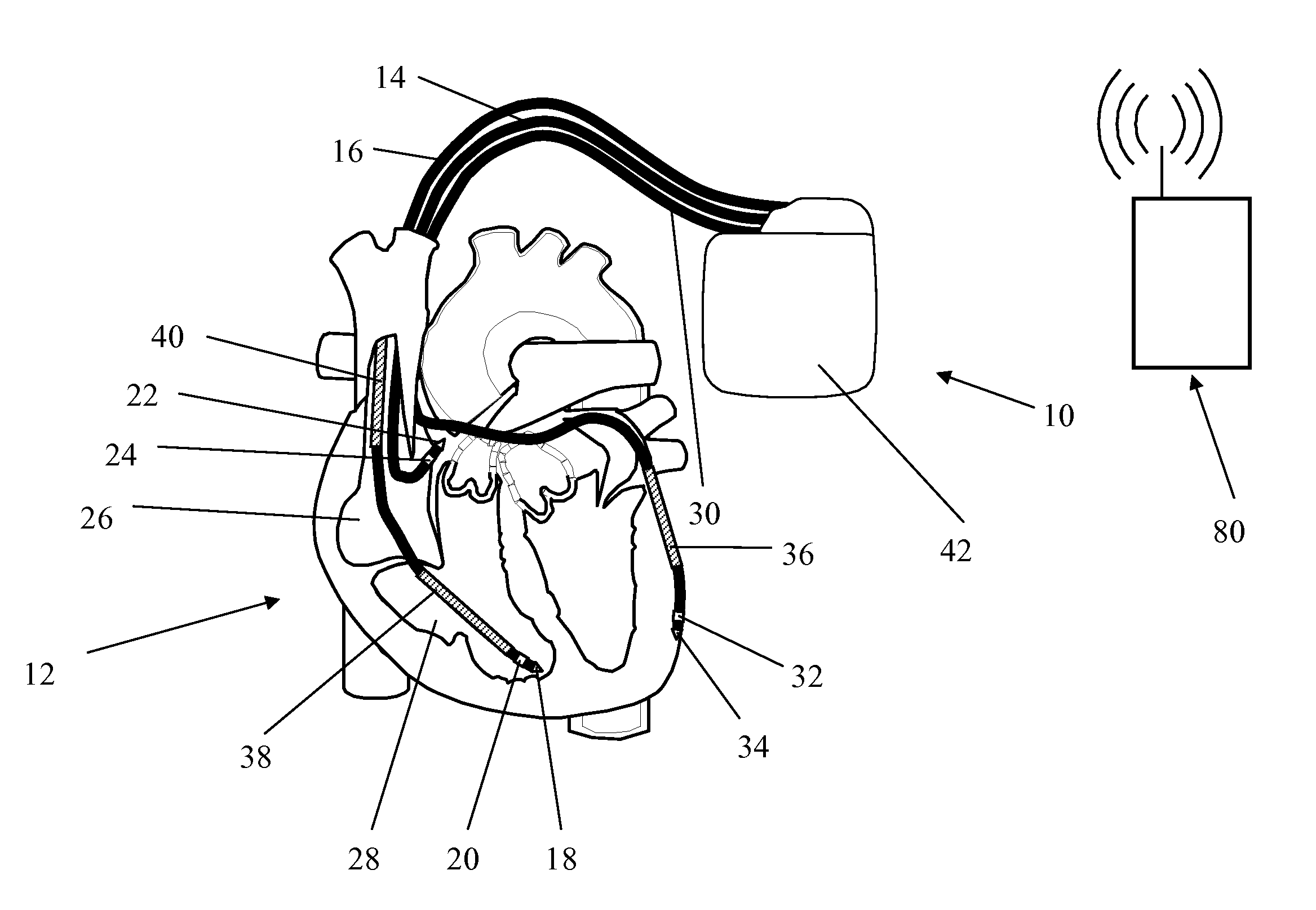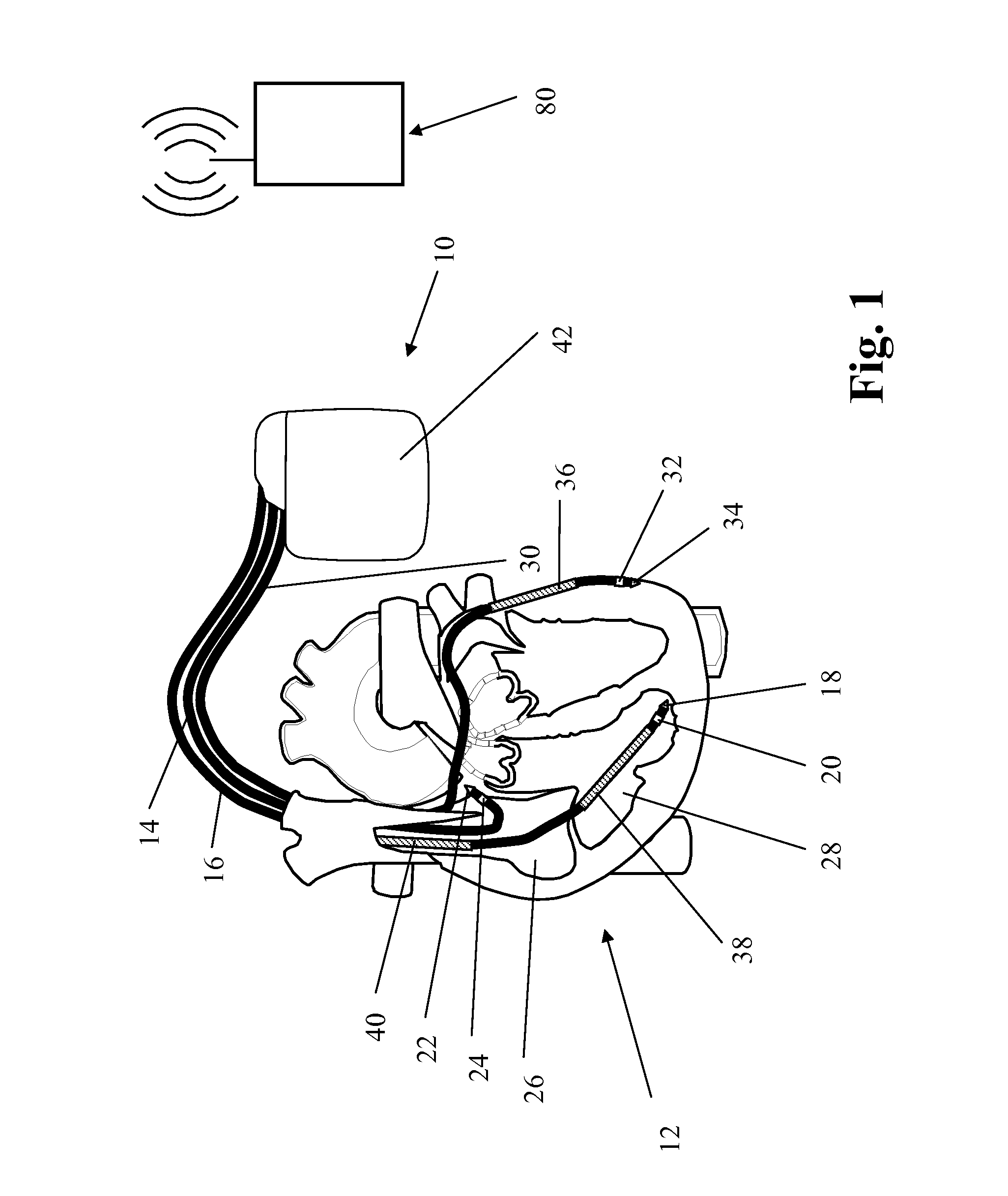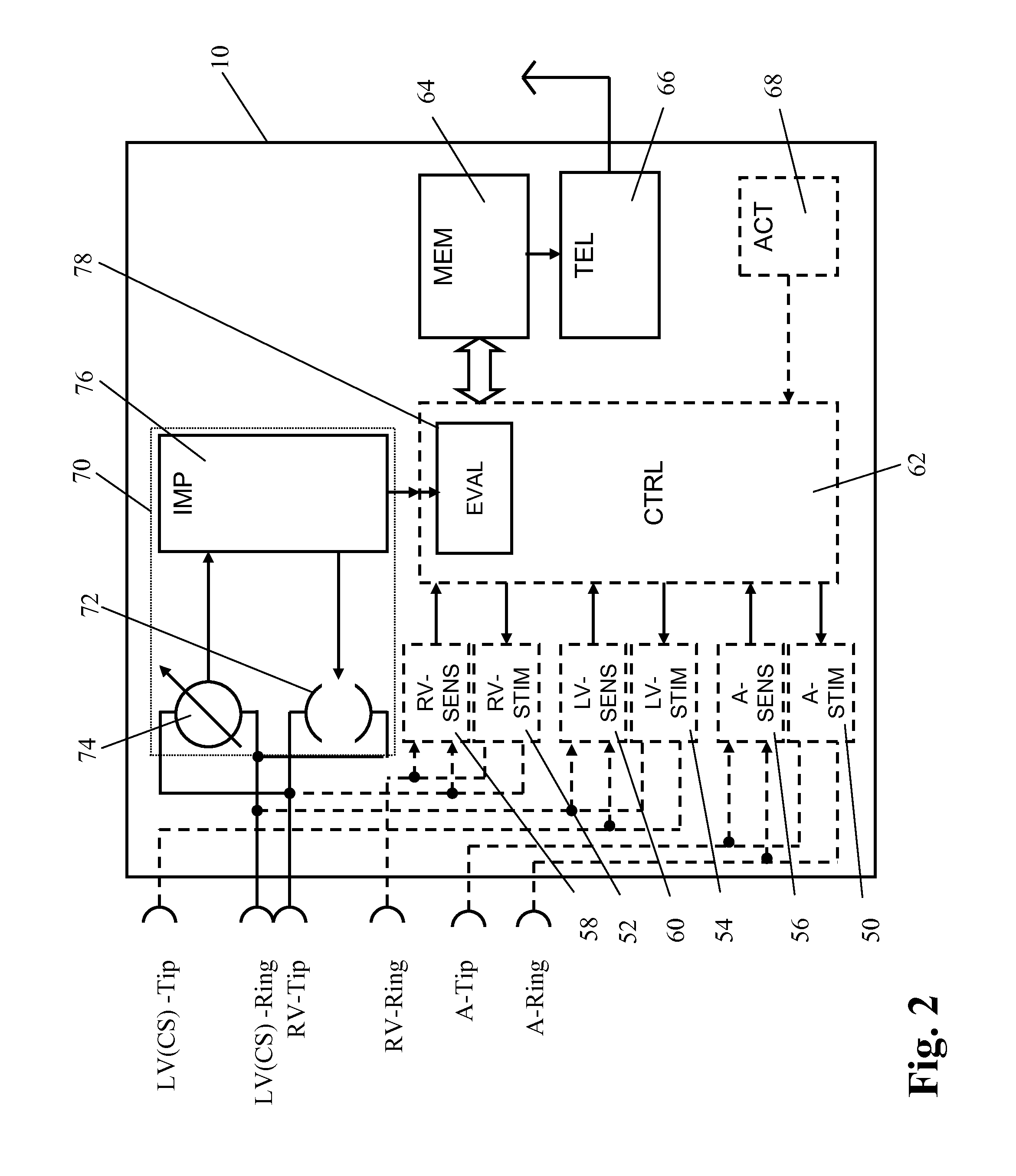Apparatus and method to optimize pacing parameters
- Summary
- Abstract
- Description
- Claims
- Application Information
AI Technical Summary
Benefits of technology
Problems solved by technology
Method used
Image
Examples
Embodiment Construction
[0059]The following description is of the best mode presently contemplated for carrying out at least one embodiment of the invention. This description is not to be taken in a limiting sense, but is made merely for the purpose of describing the general principles of the invention. The scope of the invention should be determined with reference to the claims.
[0060]In FIG. 1 the implantable medical device (also referred to as implantable cardiac device) is a three-chamber biventricular pacemaker and cardioverter / defibrillator 10 that is connected to pacing / sensing leads placed in a heart 12 is illustrated.
[0061]As shown in FIG. 1, the preferred embodiment is to couple the disclosed technology with an implantable bi-ventricular defibrillator.
[0062]The implantable medical device 10 is electrically coupled to heart 12 by way of leads 14, 16 and 30.
[0063]Lead 14 is a right atrial electrode lead that has a pair of right atrial electrodes 22 and 24 that are in contact with the right atria 26 ...
PUM
 Login to View More
Login to View More Abstract
Description
Claims
Application Information
 Login to View More
Login to View More - R&D
- Intellectual Property
- Life Sciences
- Materials
- Tech Scout
- Unparalleled Data Quality
- Higher Quality Content
- 60% Fewer Hallucinations
Browse by: Latest US Patents, China's latest patents, Technical Efficacy Thesaurus, Application Domain, Technology Topic, Popular Technical Reports.
© 2025 PatSnap. All rights reserved.Legal|Privacy policy|Modern Slavery Act Transparency Statement|Sitemap|About US| Contact US: help@patsnap.com



